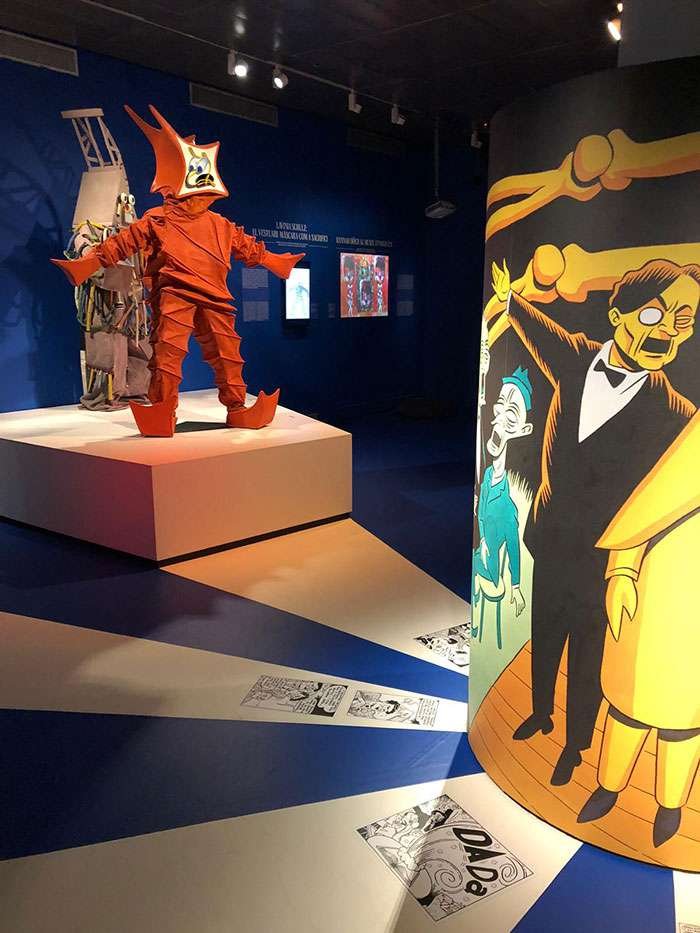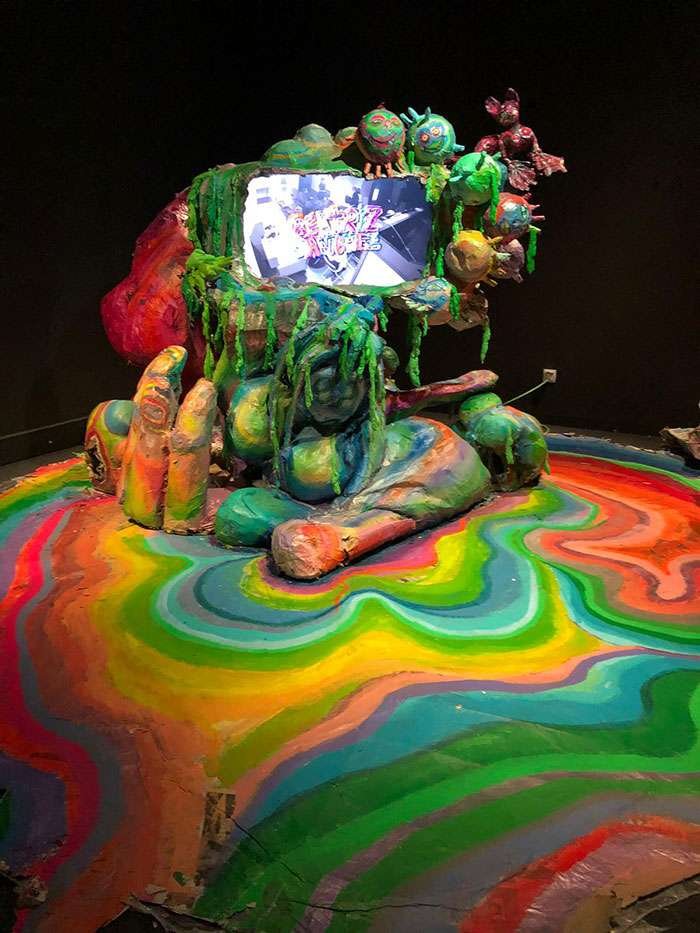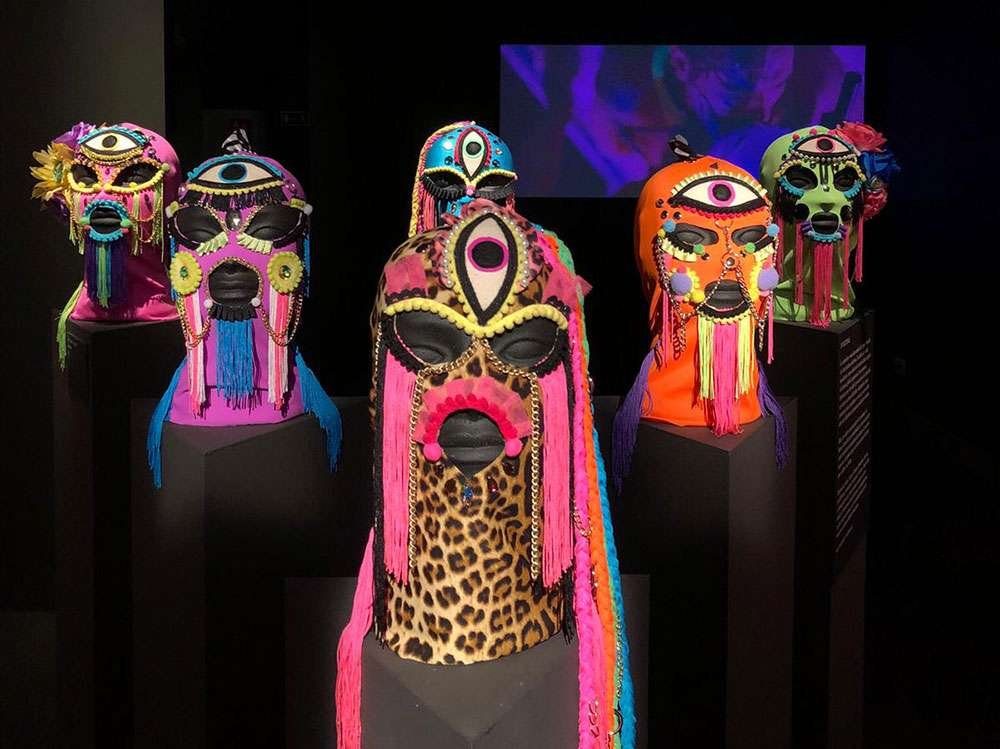With so many museum acronyms, it’s easy to confuse one for another, but this is one you’ll want to remember. On the backside of the imposing MACBA, is its little sister; the CCCB. Despite the CCCB’s opening in 1994 there’s a rich history behind the site. Formerly a monastery, the CCCB opened as part of a series of city reforms, where the government renovated several buildings in efforts to revamp the El Raval area.
Today the goal of the center is to display contemporary societal challenges through different languages and mediums, including extensive exhibitions, conferences, literary meetups, film screenings and festivals. In addition, the CCCB houses public archives, a library, and the Terracccita bar and restaurant.
After seeing a flyer in the metro showcasing the new exhibit titled “The Mask Never Lies,” I knew I had to go. Accidentally entering MACBA isn’t an advised first step, but it was a humbling one. After that quick detour, I made a quick circle around the block and arrived at the entry gates to the CCCB. Unsuspecting from the outside, the CCCB’s interior is modern, aesthetic, peaceful and easy to navigate.
Current exhibits
Currently the CCCB is running two major exhibits: “The Mask Never Lies,” and “Francesc Tosquelles: Like a Sewing Machine in a Wheat Field.” For my visit, I selected the “The Mask Never Lies,” all things worldwide pandemic considered. I wanted to learn more about the history of masks and their differing purposes across cultures and throughout time.
The exhibit was captivating and thorough. It examined face coverings since their first conception in tribal rituals and carvings on Viking coins all the way up to the modern day surgical mask. The exhibit started with 4 masks each in their own glass case. It was an unexplainable feeling seeing the KN95 mask on my face on display in a museum, an eerie reminder that Covid will be written in history books for years to come and that the next generation will surely marvel at the masks the entire planet wore daily for over two years.

From there, the exhibit takes visitors through a windy series of rooms, each focusing on a different cultural or historical group associated with masks whether it be the violent Klu Klux Klan in the United States, the fictional French character Fantômas who inspired dozens of novels and movies, Mexican wrestlers adorned with colorful Spandex masks, or the colorful beaded masks of Pussy Riot feminists in Russia. Each person’s mask became a part of their identity. The exhibit shows us through every example that masks are used for one of three things: to hide someone’s identity, bring attention to it, or change it.
New technologies
Also addressed was the innovative facial recognition technology, which masks of course make more difficult. The exhibit showed the historical pattern of facial recognition technology going back and forth, as people (often criminals) figured out how to avoid surveillance, the police would make progress, and the criminals would go back to the drawing board. Masks have been used in nearly every sector in life (for good and bad), and the CCCB exhibit opened my eyes up to masks far beyond the surgical mask in our current Covid era.
Colors creating mood
If there was one thing that stood out to me the most it was the use of colors. As a museum enthusiast, I have never seen colorful interior design in such a dramatic, effective way before.The mood of each room would shift depending on the color of the walls or texture of the floor, from a cool navy blue to red walls and checkered floors. Not to mention the variety of pieces; it was not just pictures and relics, but an entire experience. Among the content were real masks, magazine clippings, books, screenings of movies and television shows, running research interviews, and life size statues and sculptures/ pieces all accompanied by excellent copy and explanations.

The CCCB’s exterior and space itself is extraordinary, but what it houses within is what makes it truly a unique find. Much like a mask, the CCCB at first looks simple, but when looked at more closely it reveals itself to be a place for artists, history lovers and anyone in the community who wishes to learn more about the different fascinating aspects of contemporary culture.



Thanks for your interest in art & creativity on FrikiFish— a one-woman labor of love, providing free content and services to artists, art-lovers and creative projects in-and-around Barcelona. This project runs on caffeine and community love, please consider supporting with a donation or a cup of coffee. Thank you!